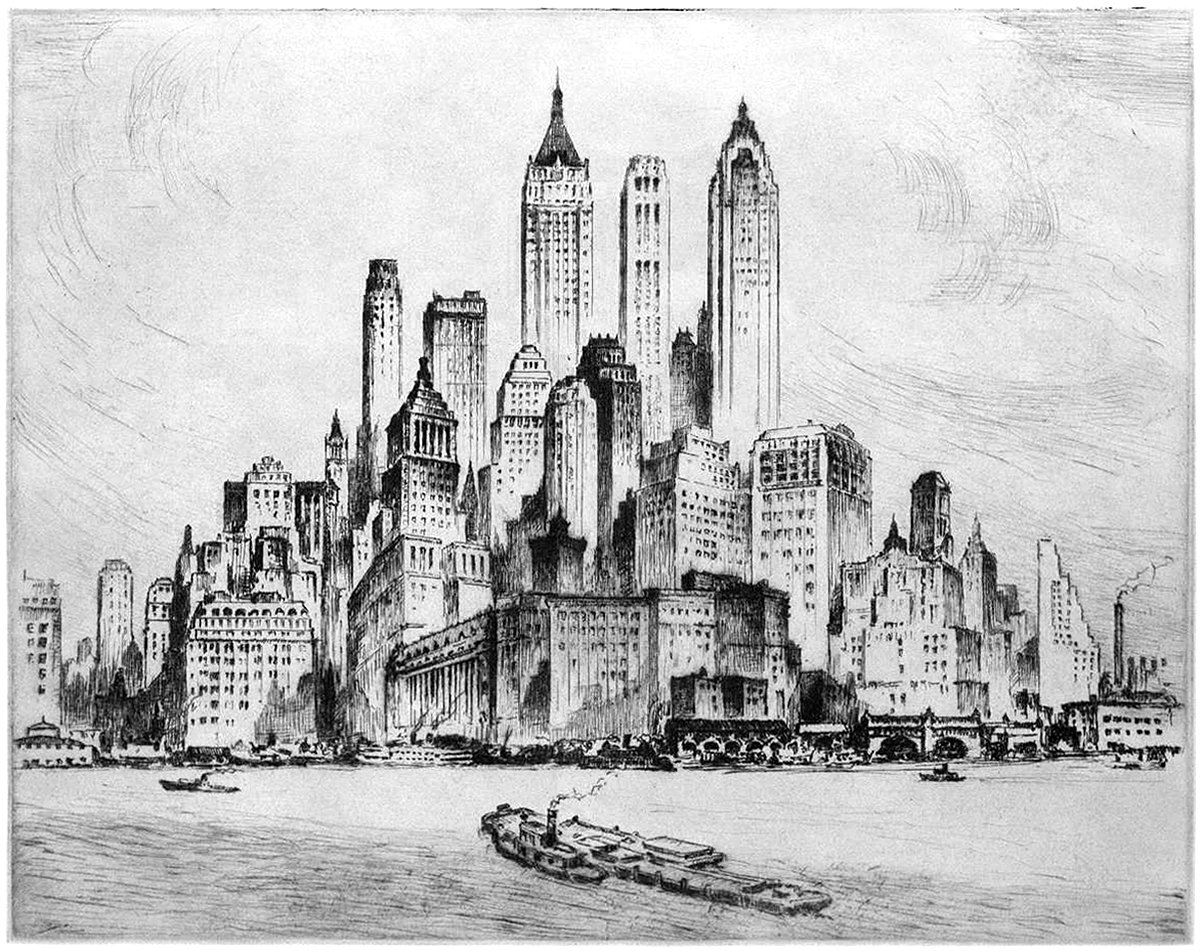Nat Lowell and the Tip of Manhattan
1929 etching by Nat Lowell showing the southern tip of Manhattan with her mountain of skyscrapers.
Pictured here is an etching by artist Nat Lowell, showing the southern tip of Manhattan, circa 1940. The perspective is from the harbor, and Lowell focuses on three towers, standing proudly above the rest. From left to right, they include the Bank of Manhattan Trust Building (now called 40 Wall Street), the City Bank-Farmers Trust Building (now called 20 Exchange Place), and the Cities Service Building (now called 70 Pine Street). These towers, along with their surroundings, form a mountain of sorts, with the surrounding city sloping up to meet them on either side. This is a manufactured view, to be sure; Lowell has taken liberties to arrange the buildings in this way. As such, the result is somewhere in between a faithful re-creation and a collage, with verticality as the organizational force.
The three towers mentioned here, along with the fourth-tallest off to the left, the Irving Trust Company Building (now called 1 Wall Street), make up a quartet of art-deco skyscrapers that were built between 1929 and 1931, in the early years of the Great Depression. Together they represent the end of the pre-depression era of architectural optimism, and at the time they towered over their surroundings. In a way, they represent the last efforts of the early age of skyscrapers. Lowell must’ve understand this, because his composition arranges them centrally and puts them high above their surroundings. The rest of Lower Manhattan seems to huddle around them, trying to steal a bit of that height.
In recent years, these four towers have also come to symbolize rebirth. 20 Exchange, 70 Pine and 1 Wall Street have all shed their commercial roots to become residential towers. The owners of 40 Wall had similar plans, but they proved too expensive, so it remains commercial. This contemporary rebirth likely saved these buildings from demolition. I previously wrote about the Singer Building, which was sadly demolished in the late 60s, in contrast to 20 Exchange.
I love this image, because it exists somewhere between reality and Mr. Lowell’s mind. He deftly evokes the spirit of Lower Manhattan without being constrained to its physical reality. The result evokes the history of the place and lets us contemplate how it’s changed over time.
Check out other posts about New York here.

